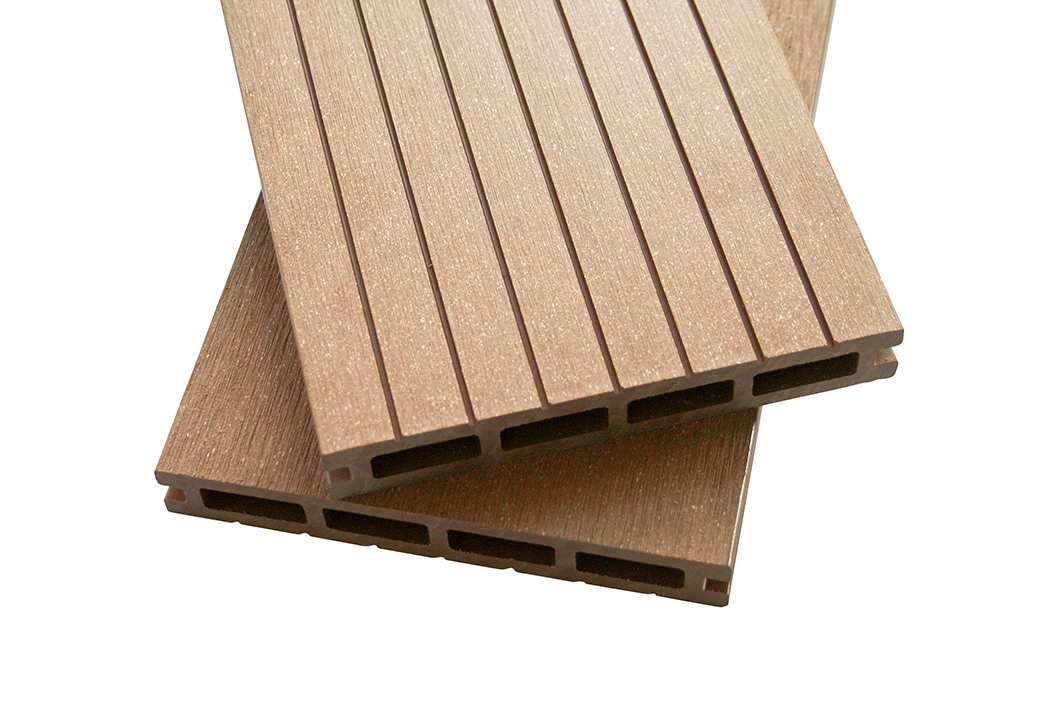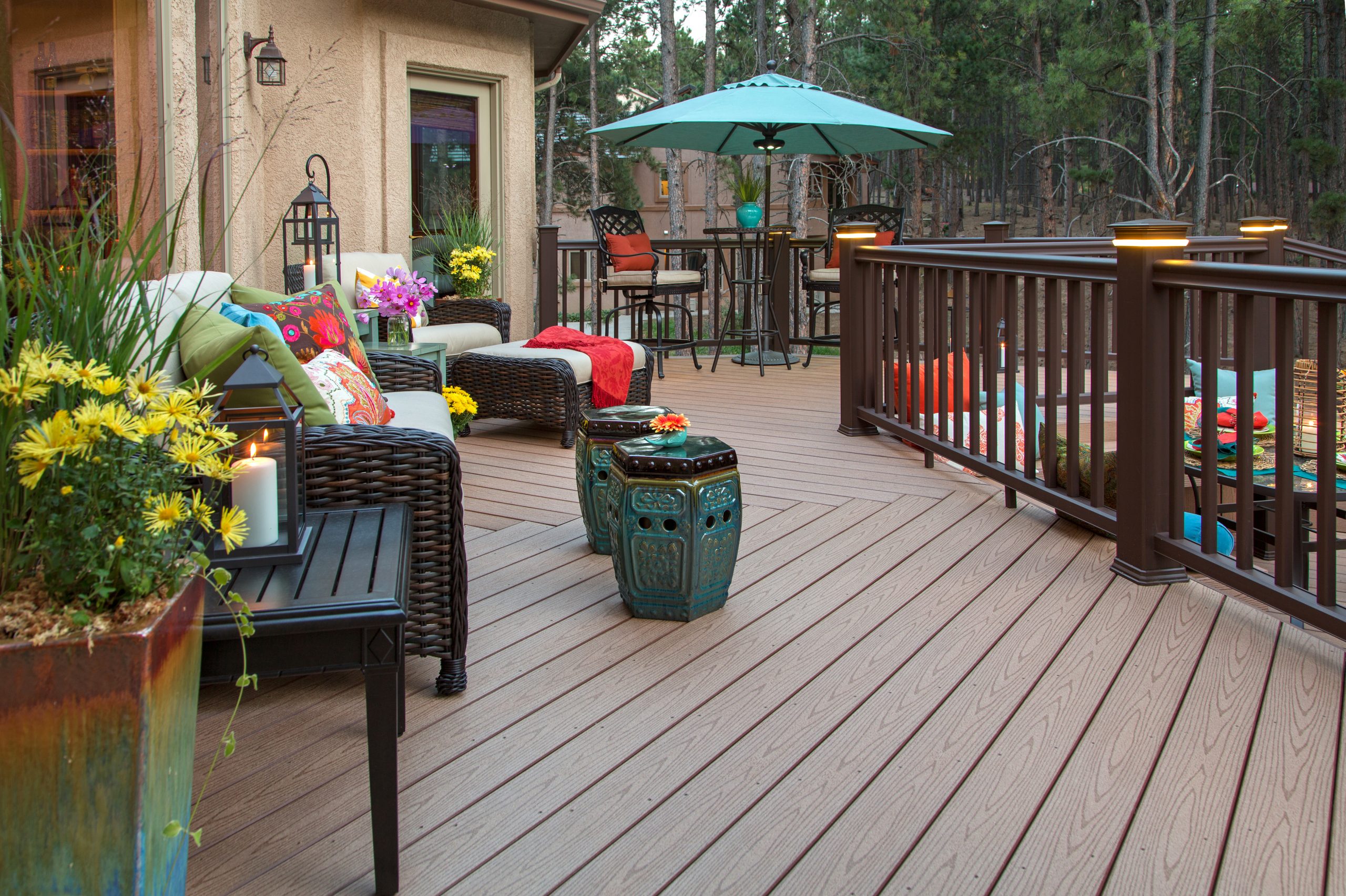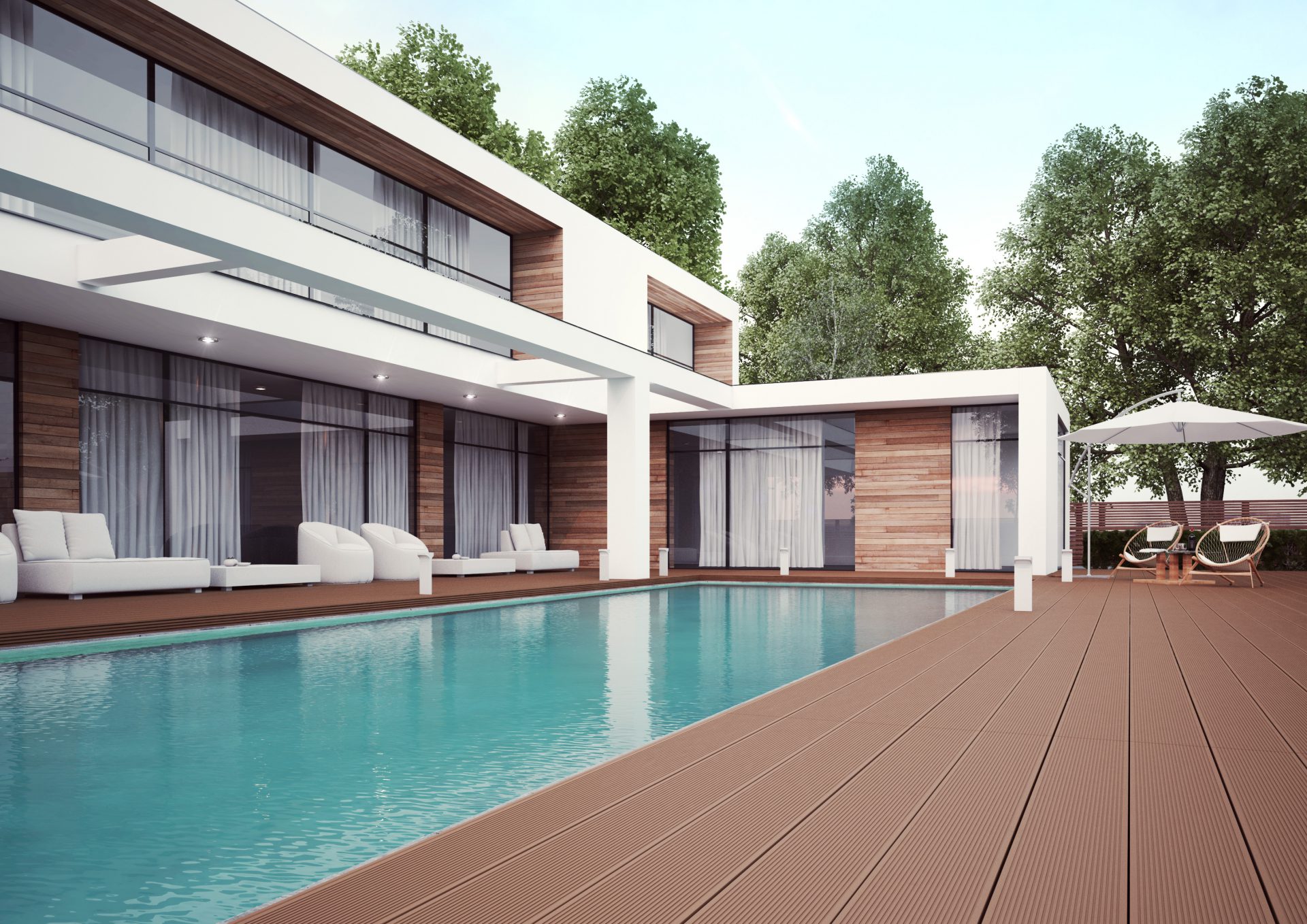Wood-plastic composite (WPC) products represent a novel and environmentally friendly outdoor construction material, offering a sustainable alternative to treated wood and solid timber. By combining the natural beauty of wood with the practicality of plastic, WPC has become the ideal choice for outdoor spaces. This material is created by mixing wood powder with HDPE plastic granules and functional additives, followed by extrusion. Its unique properties make it the preferred option for outdoor environments.
01 Different Types of Wood-Plastic Composite Decking
Co-extruded Wood-Plastic Composite Decking:
The advantage of co-extruded WPC decking lies in its ability to fully utilize the characteristics of different materials, resulting in a product with multiple performance benefits. For instance, the inner layer can provide strength and durability, while the outer layer imparts a natural appearance. This technology enhances the decking's weather resistance, UV resistance, and overall aesthetic appeal for outdoor use.

Solid Wood-Plastic Composite Decking:
This type of decking stands out for its exceptional strength and load-bearing capacity. With a density higher than conventional wood, it exhibits superior weather resistance in outdoor environments. This makes it an ideal choice for high-traffic areas that experience substantial footfall and pressure, such as busy parks, wide boardwalks, and lively plazas.

Hollow Wood-Plastic Composite Decking:
Hollow WPC decking has advantages in terms of flexibility. This type of decking can present various designs, and its hollow structure provides a balance between cost-effectiveness and strength. Ideal for areas like private courtyards, spacious terraces, and elegant balconies, it caters to a diverse range of installation preferences.

02 Different Uses of Decking

Leisure Areas in Residential Villas:Wood-plastic composite decking seamlessly integrates into every corner of the courtyard, creating a relaxing and entertaining space for families. From serene courtyards to spacious terraces, delightful balconies, and potential pool areas, WPC decking finds versatile applications.

Commercial and Office Spaces:Whether in urban commercial skyscrapers or the leisure platforms of office buildings, WPC decking can cultivate a relaxed and pleasant environment. Its minimal maintenance requirements make it an ideal choice for people to enjoy life amid their busy work schedules.

Parks and Community Leisure Areas:Whether on park platforms or community leisure squares, even pathways paved with beautiful wood-plastic composite decking, it blends harmoniously with the surrounding natural environment, creating a harmonious landscape.

School Rest Platforms:Due to its low maintenance requirements, wood-plastic composite decking is suitable for school environments. It provides children with a safe and natural space, fostering their growth in a healthy environment.

Waterfront Areas:With its outstanding waterproof performance, wood-plastic composite decking shines in waterfront areas such as coastal boardwalks and squares.
As society continues to evolve, the demand for high-quality outdoor living environments is on the rise. Wood-plastic composite decking, as a versatile and eco-friendly material, is gradually finding applications in various spaces, enhancing outdoor living experiences for people. Whether at home or in commercial settings, WPC decking adds vibrancy to spaces, bringing comfort and joy to individuals.

